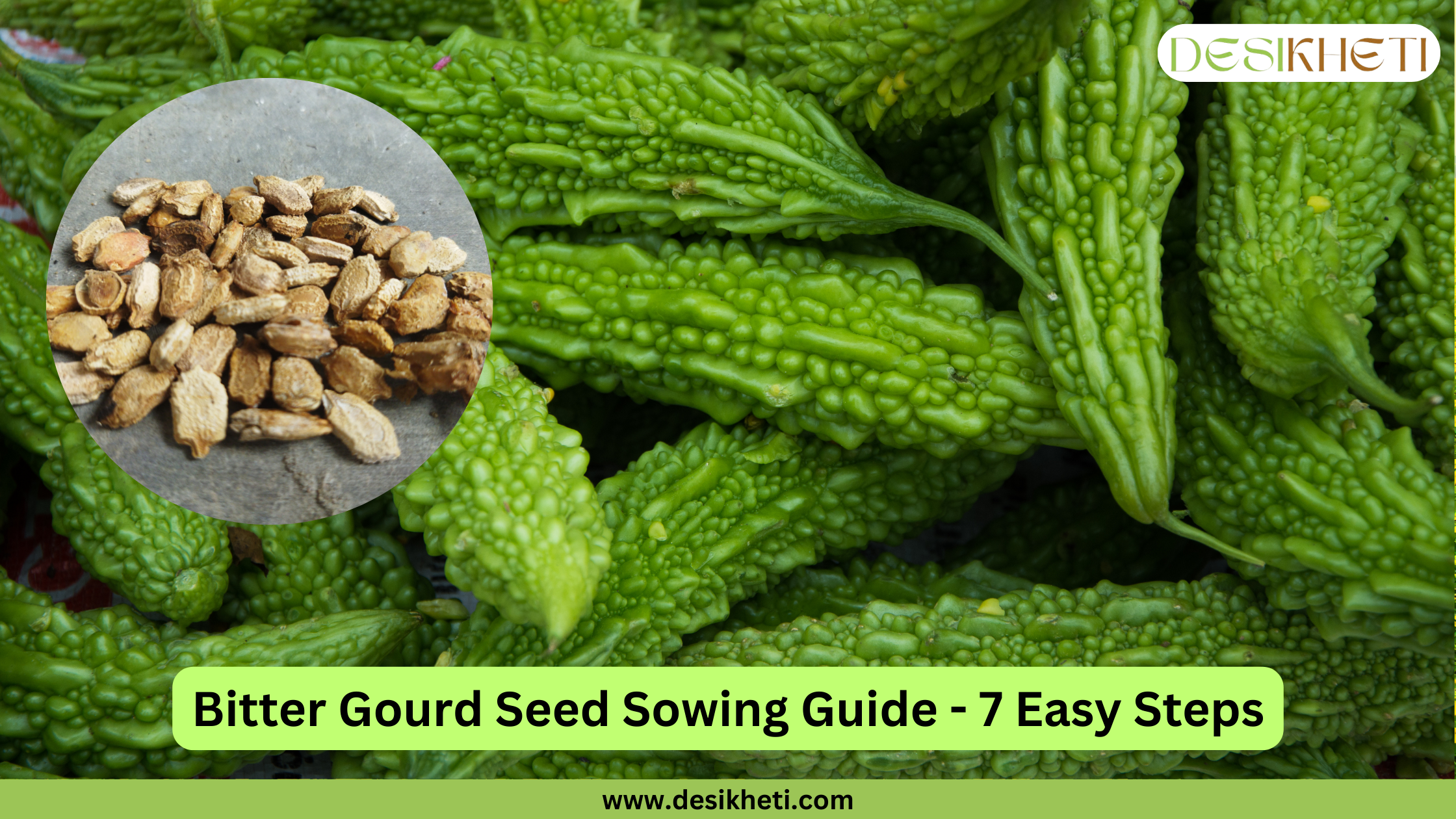Table of Contents
Introduction
Do you like eating bitter gourd? Bitter gourd (Momordica charantia), also known as karela, is a popular vegetable grown and widely consumed across India. Known for its distinct bitter taste, it is a regular part of Indian meals and is used in curries, stir-fries, juices, and even pickles. Bitter gourd is also valued for its health benefits. It is often recommended for people with diabetes and is believed to support digestion and boost immunity. Due to its consistent market demand and widespread use in Indian cooking, bitter gourd farming is a profitable option for both small and large scale farmers.
Bitter gourd grows well in different climates, making it suitable for many regions in India. In this blog, we will guide you through how to grow bitter gourd in seven simple steps covering everything from seed selection to harvest.

Step 1: Climate, Soil, and Season for Sowing Bitter Gourd Seeds

Climate for Bitter Gourd Cultivation
Bitter gourd grows well in tropical and subtropical climates. A warm climate is suitable for better growth, and the crop does not tolerate frost or low temperatures. For optimal seed germination, a minimum temperature of around 18°C is required, while healthy plant growth and development occur best at temperatures close to 30°C. Short-day conditions encourage better production of female flowers, which directly boosts fruit yield.
Soil for Bitter Gourd Cultivation
Bitter gourd grows best in sandy loam soil that is well-drained and rich in organic matter. This type of soil supports early growth and healthy fruit development. Good drainage is crucial, as waterlogging can harm the roots and reduce yield. The ideal soil pH for bitter gourd cultivation ranges from 5.5 to 6.7.
Season to Sow Bitter Gourd Seeds
Bitter gourd is sown in all three seasons in different regions of India. In most parts of India, the summer crop is sown between February and March, while the rainy season crop is planted during June to July. In South India, sowing is typically done from October to November. In hilly regions of North India, bitter gourd is generally sown in the months of April to May.
Step 2: Selecting the Right Bitter Gourd Variety

Various factors such as variety, color, maturity period, local market preferences, climatic conditions, soil type, and irrigation facilities need to be considered while selecting a bitter gourd variety. For your convenience, a few bitter gourd varieties are listed below.
Step 3: Procuring Quality Bitter Gourd Seeds
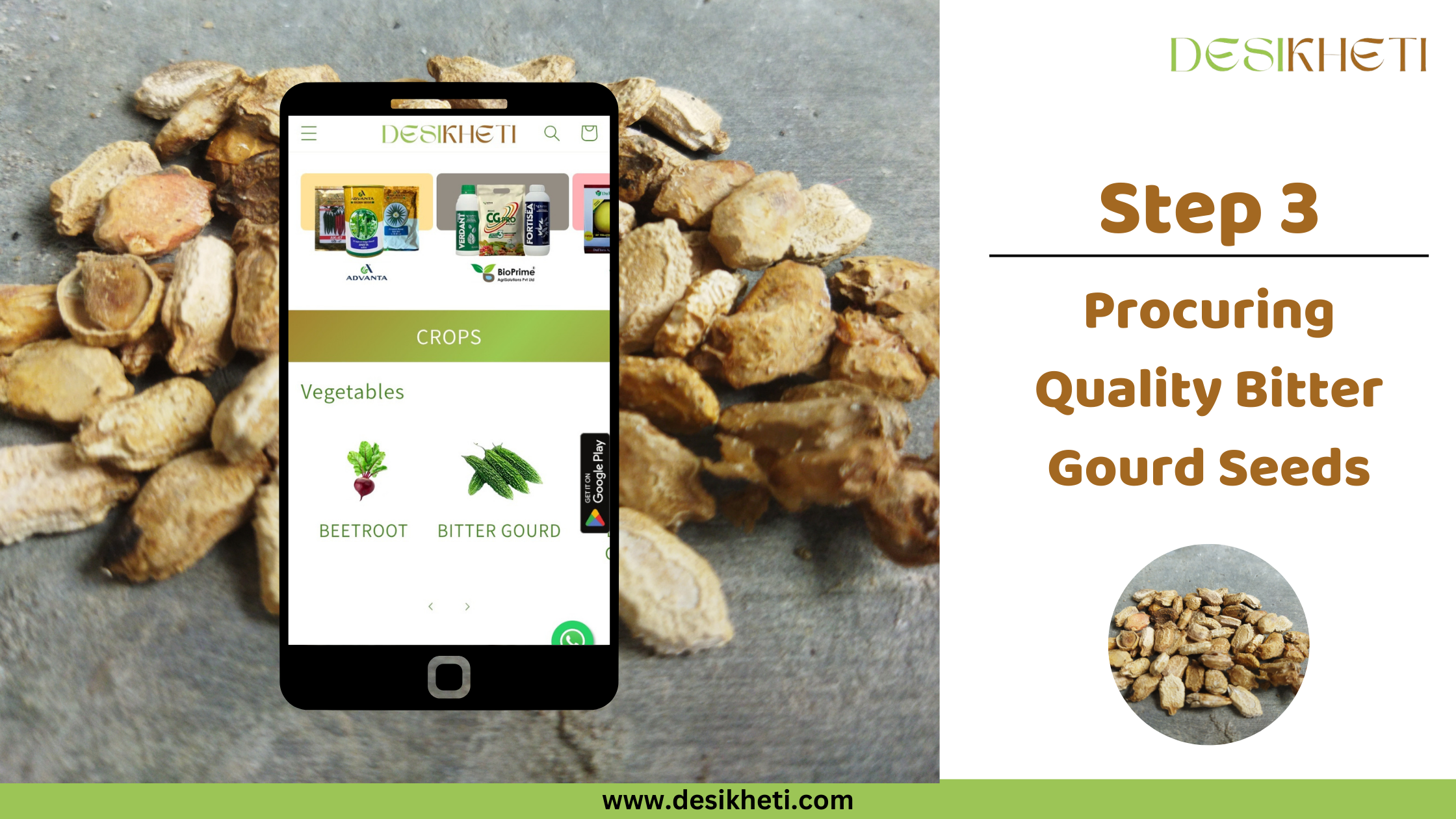
For successful bitter gourd farming, selecting high-quality seeds is essential. Even with the best cultivation practices, poor-quality seeds can result in low yields and weak plant health. Looking for the best bitter gourd seeds? DesiKheti offers a wide range of premium bitter gourd seeds tailored to your farming needs. Browse our collection of bitter gourd seeds, place your order online, and enjoy fast, reliable delivery right to your doorstep.
Step 4: Land Preparation for Sowing Bitter Gourd Seeds
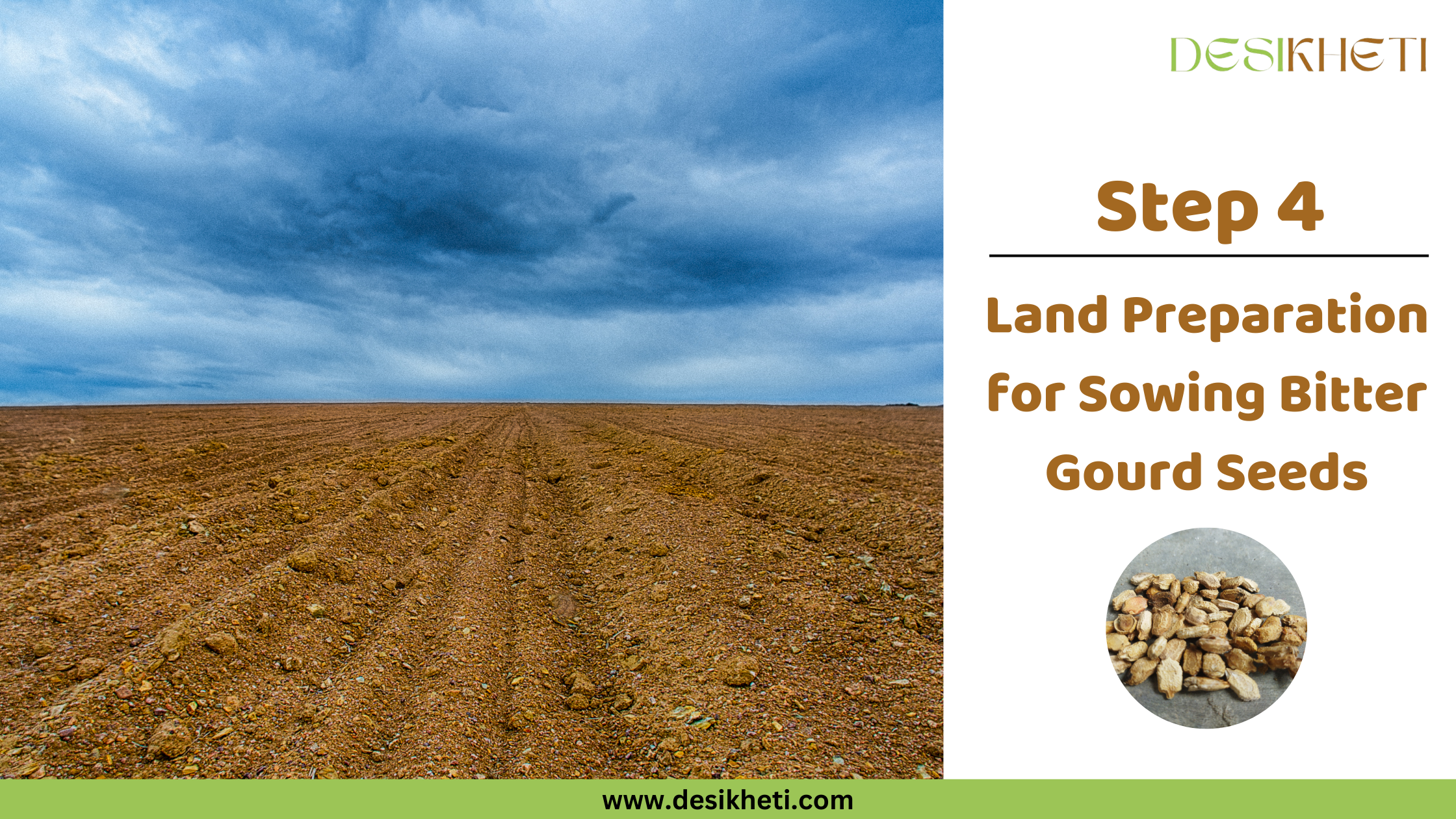
To prepare the land for bitter gourd cultivation, plough the field 3 to 4 times to make the soil loose and weed-free. This helps in proper root development and good aeration. Apply 8 to 10 kg of FYM per acre during the final ploughing. This boosts soil fertility and supports healthy plant growth.

Step 5: Sowing Bitter Gourd Seeds

Bitter gourd seeds can be sown directly in the field or transplanted after raising seedlings in polythene bags for 15–20 days. Sowing is commonly done on raised beds or furrows, with a spacing of 1.5 to 2 metres between rows and 60 to 120 cm between plants. This method ensures good drainage and healthy vine development. In the pit method, farmers dig pits of about 60 x 60 x 45 cm, refill them with topsoil and well-rotted FYM, and then sow 4–5 seeds per pit at a shallow depth of 1–2 cm to promote better germination.
Seeds typically germinate within 4–5 days, and after about 2–3 weeks, weak or unhealthy seedlings are removed, keeping only 2–3 healthy ones per pit. Proper sowing depth is crucial, as deeper sowing may delay germination and reduce plant vigor.
Step 6: Care After Sowing Bitter Gourd Seeds
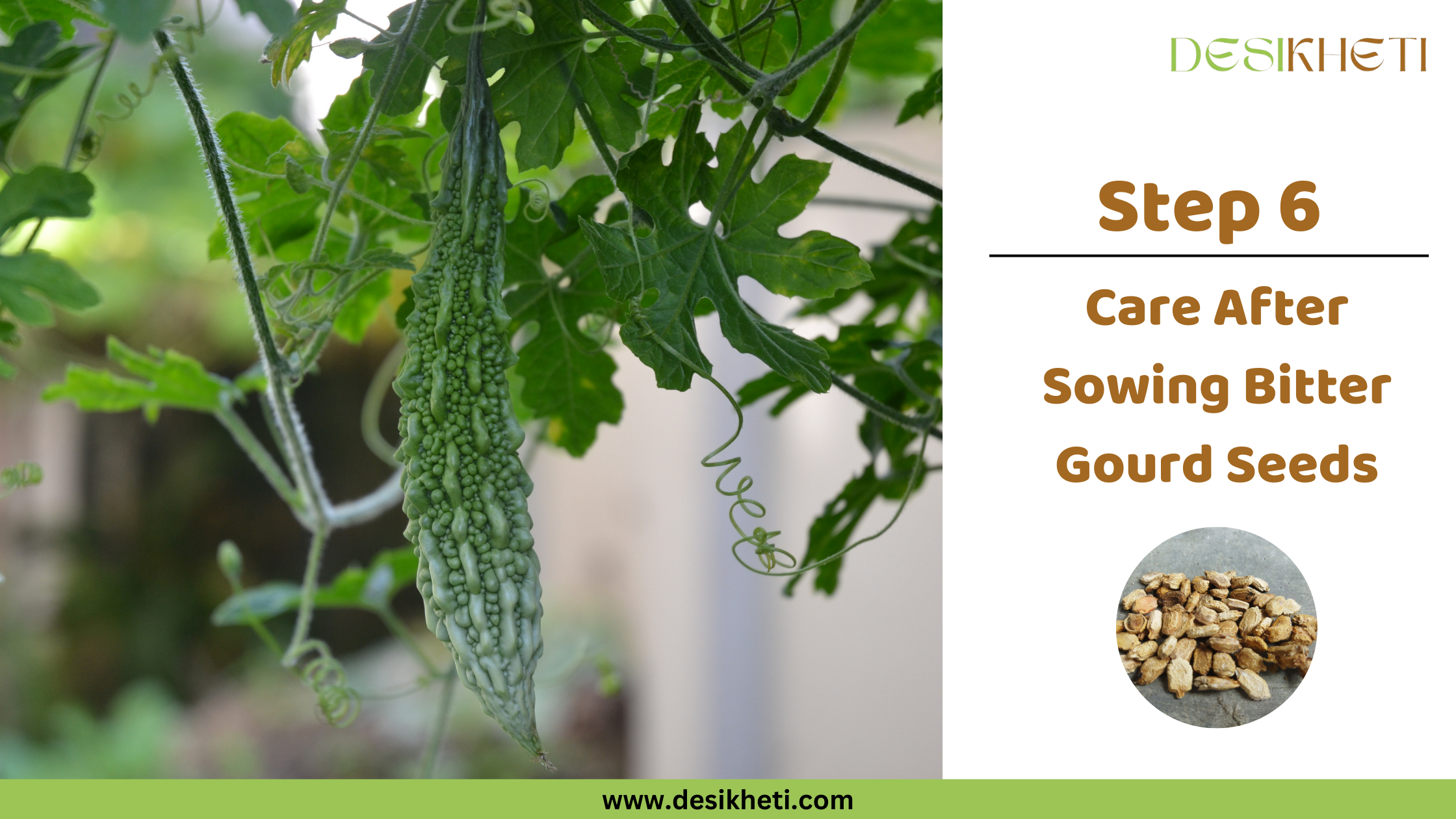
Water Management;
In the rainy season, the crop usually requires little to no additional watering. However, for the summer crop, provide light irrigation immediately after sowing, followed by watering every 4 to 5 days until flowering begins.
Maintaining proper soil moisture during the flowering and fruiting stages is very important for a good yield. The crop can be irrigated on alternate days during these stages.
Weed Management;
Manual weeding can be done to remove weeds. The first weeding can be carried out 30 days after sowing the bitter gourd seeds, followed by subsequent weddings at monthly intervals. Hoeing and light earthing up may also be done depending on the intensity of weed growth.
Step 7: Harvesting Bitter Gourd
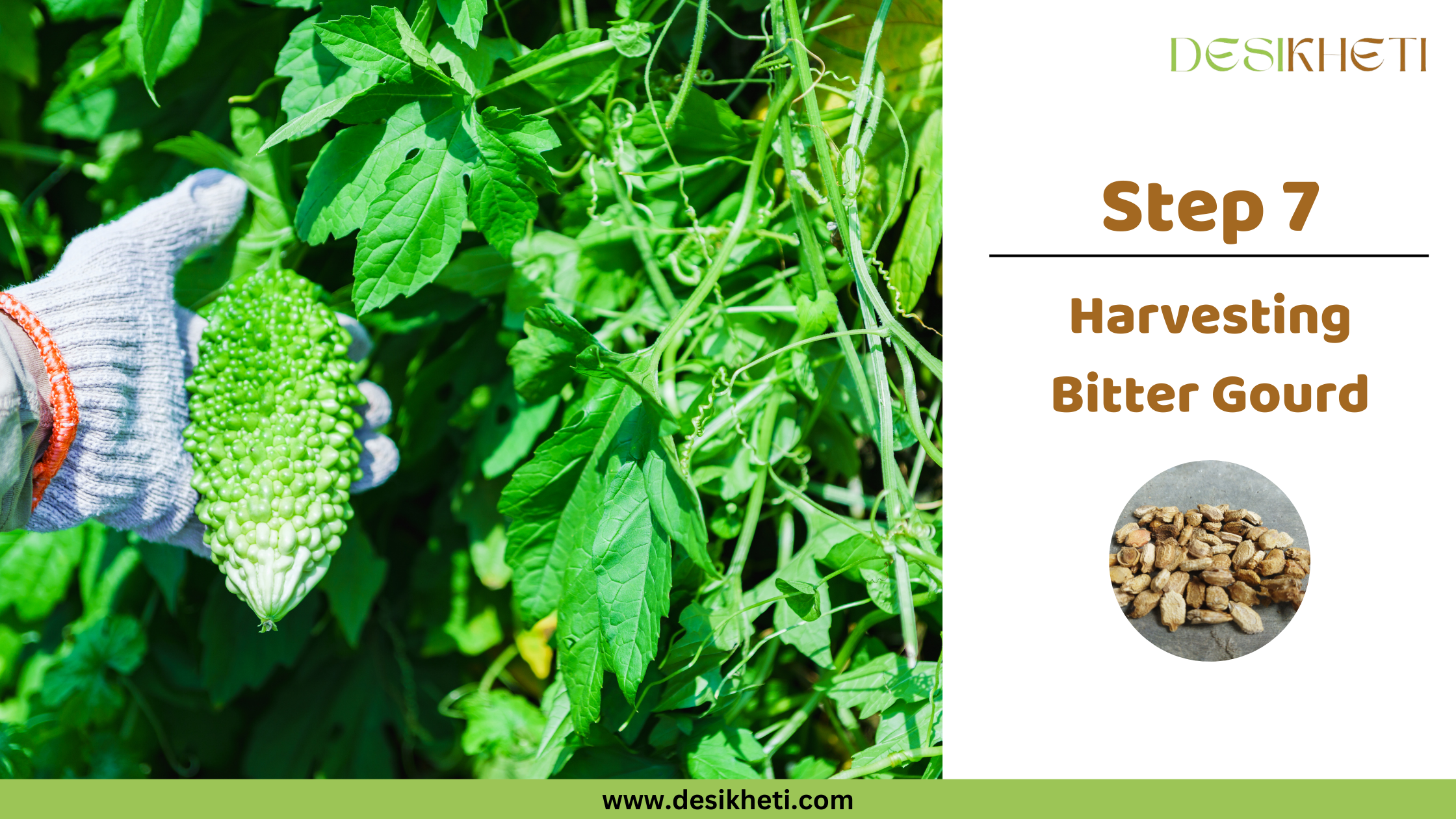
Bitter gourd is usually ready for harvest within 55 to 110 days after sowing, depending on the variety. Fruits should be picked when they are tender and green. Harvesting can be done once every 2 to 3 days. Bitter gourd fruits mature very quickly and turn red if left too long. Irregular harvesting may delay the formation of successive fruits and affect their growth and development. Therefore, harvesting the fruits regularly is important.

Common FAQs Related to Bitter Gourd Seed Sowing
Q. Which soil is best for growing bitter gourds?
A. Bitter gourd grows best in well-drained sandy loam soil that is rich in organic matter. The ideal soil pH ranges from 5.5 to 6.7.
Q. What is the seed rate of bitter gourd per acre?
A. For hybrids, the seed rate is usually 1.5 to 2 kilograms per acre when using the bower system. However, the exact seed rate may vary based on plant spacing, sowing method, and other conditions.
Q. When can bitter gourd be harvested?
A. Bitter gourd is usually ready for harvest 55 to 110 days after sowing, depending on the variety. Fruits should be picked when they are tender and green.
Q. What is the scientific name of bitter gourd?
A. The scientific name of bitter gourd is Momordica charantia.

Join DesiKheti Whatsapp Channel for regular updates, farming tips, and information on agriculture.
